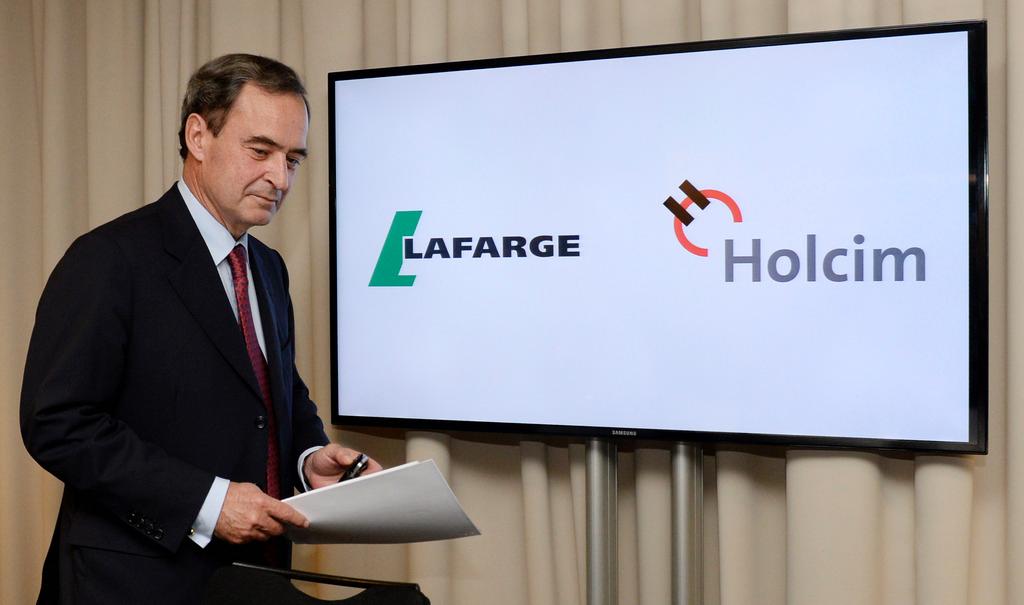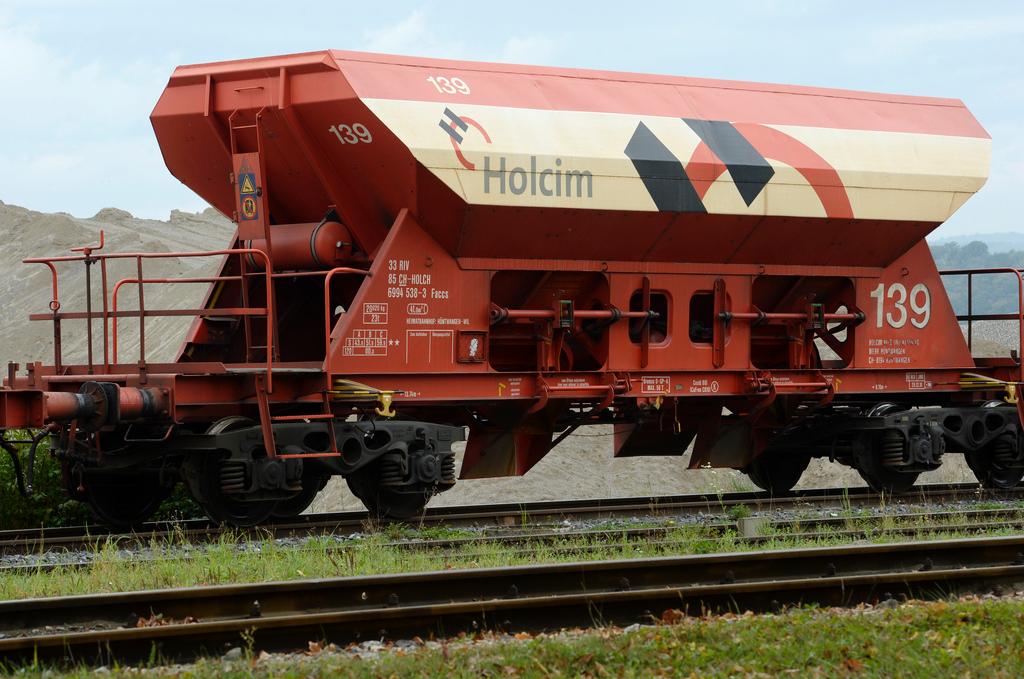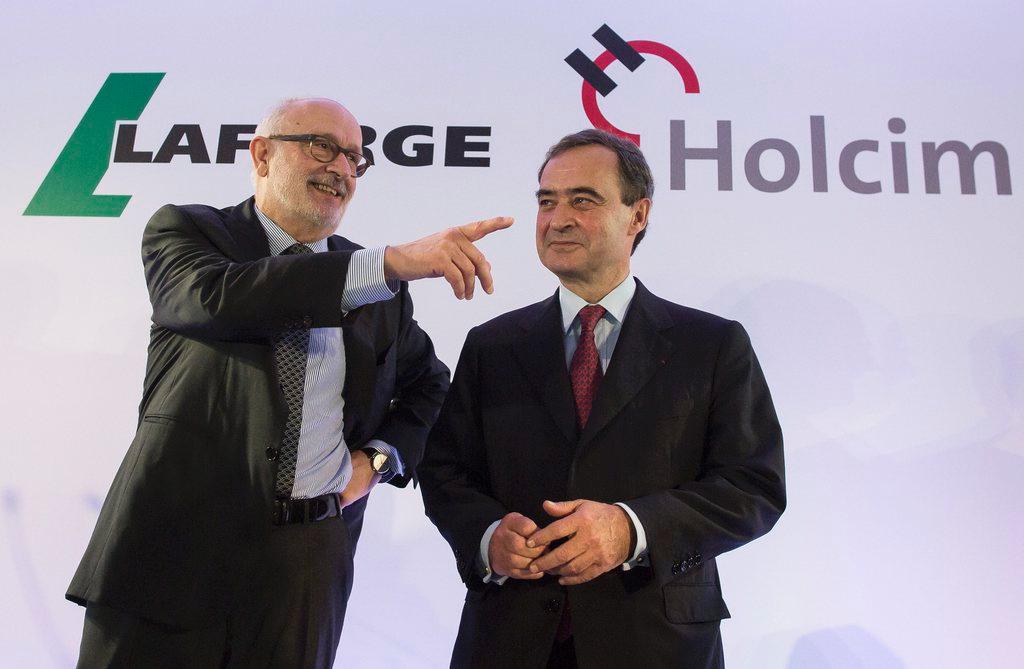Shareholders to deliver Holcim-Lafarge merger verdict

The on-off merger of cement giants Holcim and Lafarge looks set to pass the acid test of Holcim’s extraordinary general meeting on Friday. Key shareholders now appear to be on board despite earlier scepticism about the merits of the deal.
The plan to create the undisputed number one global cement manufacturer has proved far from straightforward since the CHF40 billion ($43 billion) merger was first mooted a year ago. Gaining shareholder and regulatory acceptance now looks on course to meet the end of July deadline for merger completion, but things looked less positive earlier in the year.
At one stage the deal looked to be unravelling. Holcim’s superior performance, plus the Swiss National Bank’s (SNB) decision to stop defending the franc, soured the original terms for some major Holcim shareholders.
Both sides went back to the drawing board and appeared to breathe new life into the deal on March 20. The old terms valued the shares of both companies the same. But now, if the merger goes ahead, Lafarge shareholders will have to offer ten shares for every nine that Holcim counterparts put into the central pot.
Furthermore, Lafarge chief executive Bruno Lafarge appears to have had his ambitious wings clipped and will have to settle for a place on the board as co-chairman alongside Holcim’s Wolfgang Reitzle. Lafarge’s current executive vice-president, Eric Olsen, has been unveiled as new chief executive of the joint company that will be headquartered in Zurich.
Shareholders divided
At least two thirds of Holcim’s shareholders will have to approve the plan at the company’s EGM in Zurich on Friday. Thomas Schmidheiny, Eurocement and Harris Associates – who together represent more than a third of shares – have been convinced by Holcim executives that the deal will generate €1.4 billion (CHF1.46 billion) in synergy savings, boost innovation and increase the firm’s global reach.
Institutional Shareholder Services (ISS), which advises company stakeholders and provides proxy voting services, has also voiced its approval for the merger. However, support for the proposed tie-up of Holcim and Lafarge is far from universal.
Swiss investment group Ethos Foundation and a coalition of small shareholders called Community of Interests Pro-Holcim are among dissenters that have launched public objections. Critics claim that Lafarge’s potential goodwill impairments, different culture and exposure to less stable countries in Africa and the Middle East could spell trouble for Holcim in future.
“Ethos is not convinced by the strategic rationale of the merger and is of the opinion that certain assets of Lafarge might have a negative impact on the profitability of the new group. Holcim would be better off delivering value to its shareholders on a stand-alone basis,” Ethos stated last month.
And a group of some 50 Holcim employees paraded in front of the company’s annual general meeting last month demanding assurances that all workers will keep their jobs for at least two years.
Different cultures
While many observers see the industrial logic in merging the two companies into a potentially more efficient single entity, some have voiced concerns about how that merger would actually run in practice.
“There are big question marks as to whether a merger on this scale will work,” Christian Stadler, professor for strategic management at Warwick Business School, noted. “It is the processes, the small details that you can’t put on paper, and the clash of cultures. Lafarge has a strong French culture, while Holcim is rooted on the Germanic side of Switzerland.”
Stadler pointed to problems that have beset previous large mergers, such as Daimler and Chrysler or BP and Amoco. Not all big mergers come with problems, but the difficult period of negotiations between Holcim and Lafarge early this year was punctuated by reported personality clashes between executives of both companies.
Holcim chairman Wolfgang Reitzle was keen to address such concerns when CEO designate Eric Olsen was presented to the media last month. “We have to create a new culture as fast as possible,” he told journalists. “We have to work hard to overcome natural behaviour that can create friction and hinder delivering synergies.”
Olsen was upbeat about the chances of achieving such harmony between the two companies. “I see enthusiasm and excitement, not mistrust,” he said as he described his early meetings with staff of both firms.
Takeover activity
Should the merger go ahead, as expected, it would cap a stellar year of merger and acquisition (M&A) activity involving Swiss or Swiss-based firms that were announced last year. In total, 604 M&A deals were put on the table last year with a combined value of CHF175.8 billion.External link This compares to 580 deals in 2013 valued at just CHF20.8 billion, according to Ernst & Young Switzerland.
However, activity appears to have taken a dip in the first quarter of 2015. The number of deals (137) is down 13% while the value of deals (CHF16.1 billion)External link has dropped more than a third compared to the first three months of 2014.
Ronald Sauser, head of mergers and acquisitions at Ernst & Young Switzerland, believes the slowdown in takeover activity may be the result of companies taking stock of the SNB’s abandonment of the franc-euro cap in January.
But this trend may not necessarily continue for the rest of the year despite unfavourable exchange rate conditions for Swiss firms, according to Sauser.
“It is too early to make precise predictions; at this moment we could see either a negative or positive impact on M&A activity involving Swiss companies,” he told swissinfo.ch. “The sudden strengthening of the franc has squeezed margins further for many companies. This could force them to look for targets outside of Switzerland to reduce their cost base and diversify their portfolio.”
“For others, their margins may already be too low to think about making acquisitions. But they in turn might become targets for acquirers if they cannot survive alone.”

In compliance with the JTI standards
More: SWI swissinfo.ch certified by the Journalism Trust Initiative




You can find an overview of ongoing debates with our journalists here. Please join us!
If you want to start a conversation about a topic raised in this article or want to report factual errors, email us at english@swissinfo.ch.